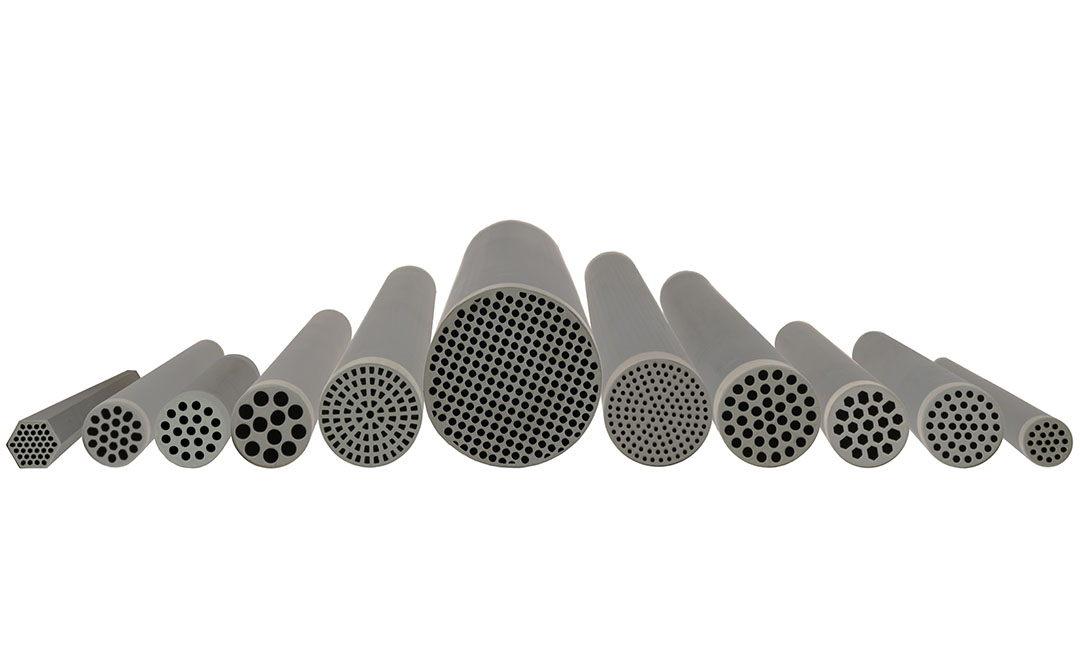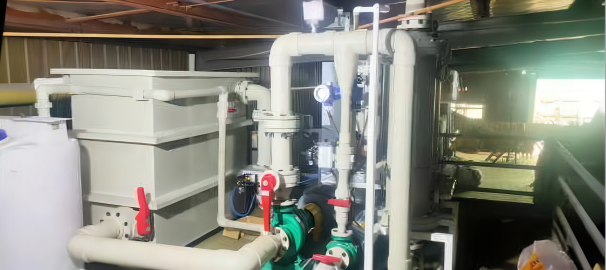Advantages of High-Durability SiC Membranes in Harsh Environments
Silicon carbide (SiC) membranes are gaining popularity in various industries due to their high durability and resistance to harsh conditions. These membranes are designed to withstand extreme temperatures, corrosive chemicals, and high pressures, making them ideal for use in demanding environments. In this article, we will explore the advantages of high-durability SiC membranes and how they can benefit industries such as water treatment, oil and gas, and pharmaceuticals.
One of the key advantages of high-durability SiC membranes is their ability to withstand high temperatures. Traditional membranes made from materials like polymeric or ceramic materials can degrade when exposed to temperatures above a certain threshold. In contrast, SiC membranes can operate at temperatures as high as 800°C without losing their structural integrity. This makes them ideal for applications where high temperatures are a concern, such as in the oil and gas industry where membranes are used for gas separation and water treatment.
Another advantage of SiC membranes is their resistance to corrosive chemicals. Many industrial processes involve the use of harsh chemicals that can degrade traditional membranes over time. SiC membranes, on the other hand, are highly resistant to a wide range of chemicals, including acids, bases, and organic solvents. This makes them ideal for use in industries such as pharmaceuticals, where membranes are used for filtration and purification processes that involve the use of corrosive chemicals.
In addition to their high temperature and chemical resistance, SiC membranes are also highly durable and long-lasting. Traditional membranes can degrade over time due to fouling, scaling, or mechanical damage, leading to decreased performance and increased maintenance costs. SiC membranes, however, are highly resistant to fouling and scaling, thanks to their smooth surface and high mechanical strength. This results in longer membrane life and lower maintenance costs, making them a cost-effective solution for industries looking to improve their operational efficiency.
Furthermore, SiC membranes offer excellent filtration performance, with high permeability and selectivity. This allows for efficient separation of particles and molecules, making them ideal for applications such as water treatment, where high-quality filtration is essential. SiC membranes can remove a wide range of contaminants, including bacteria, viruses, and organic compounds, making them suitable for use in industries where water quality is a critical concern.

Overall, high-durability SiC membranes offer a range of advantages that make them an attractive choice for industries operating in harsh environments. Their ability to withstand high temperatures, resist corrosive chemicals, and provide long-lasting performance make them a cost-effective and reliable solution for a wide range of applications. As industries continue to face increasing challenges related to environmental regulations and operational efficiency, SiC membranes offer a sustainable and efficient solution that can help them meet their goals.
In conclusion, high-durability SiC membranes are built to last in harsh conditions, offering a range of advantages that make them an ideal choice for industries looking to improve their operational efficiency and reduce maintenance costs. With their high temperature and chemical resistance, long-lasting performance, and excellent filtration capabilities, SiC membranes are a reliable and cost-effective solution for a wide range of applications. Industries looking to enhance their processes and meet regulatory requirements can benefit from the use of SiC membranes, ensuring reliable and efficient operation in even the most demanding environments.
Case Studies of Successful Applications of SiC Membranes in Extreme Conditions
Silicon carbide (SiC) membranes have gained popularity in recent years due to their high durability and resistance to harsh conditions. These membranes are being used in a variety of applications where traditional materials would fail, making them a valuable asset in industries such as wastewater treatment, oil and gas production, and chemical processing.
One of the key advantages of SiC membranes is their ability to withstand extreme temperatures and corrosive environments. This makes them ideal for use in applications where traditional membranes would degrade quickly, leading to frequent replacements and increased maintenance costs. By using SiC membranes, companies can reduce downtime and improve overall efficiency.

In the field of wastewater treatment, SiC membranes have proven to be highly effective in removing contaminants and producing clean water. These membranes can withstand the high temperatures and harsh chemicals often found in industrial wastewater, making them an ideal choice for companies looking to improve their treatment processes. By using SiC membranes, companies can achieve higher levels of water purity while reducing operating costs.
In the oil and gas industry, SiC membranes are being used to separate oil and water in offshore drilling operations. These membranes are able to withstand the high pressures and temperatures found in deep-sea environments, making them an essential component in the production process. By using SiC membranes, companies can improve the efficiency of their operations and reduce the environmental impact of their activities.
In chemical processing plants, SiC membranes are being used to filter out impurities and separate different components of chemical mixtures. These membranes are able to withstand the corrosive nature of many chemicals, making them an ideal choice for companies looking to improve the quality of their products. By using SiC membranes, companies can reduce waste and improve the overall efficiency of their processes.
Overall, SiC membranes are a valuable asset in industries where traditional materials would fail. Their high durability and resistance to harsh conditions make them an ideal choice for companies looking to improve their operations and reduce maintenance costs. By using SiC membranes, companies can achieve higher levels of efficiency and productivity, leading to increased profitability and sustainability.
In conclusion, SiC membranes are a valuable tool for companies operating in extreme conditions. Their high durability and resistance to harsh environments make them an ideal choice for industries such as wastewater treatment, oil and gas production, and chemical processing. By using SiC membranes, companies can improve their operations, reduce maintenance costs, and achieve higher levels of efficiency. With their proven track record of success, SiC membranes are built to last in even the most challenging conditions.
Future Developments and Innovations in High-Durability SiC Membranes
High-durability silicon carbide (SiC) membranes are emerging as a pivotal technology in various industrial applications, particularly in environments characterized by extreme conditions. As industries continue to evolve, the demand for materials that can withstand harsh environments while maintaining performance is paramount. Future developments in SiC membranes are poised to address these challenges, focusing on enhancing their durability, efficiency, and versatility. Researchers are exploring innovative fabrication techniques that could significantly improve the structural integrity of SiC membranes. By employing advanced deposition methods, such as chemical vapor deposition (CVD) and atomic layer deposition (ALD), scientists aim to create membranes with superior mechanical properties and resistance to chemical degradation. These techniques allow for the precise control of membrane thickness and porosity, which are critical factors in determining the overall performance of the membranes in demanding applications.
Moreover, the integration of nanotechnology into the development of SiC membranes is expected to yield significant advancements. The incorporation of nanostructured materials can enhance the surface area and improve the filtration capabilities of SiC membranes, making them more effective in separating contaminants from liquids and gases. This is particularly relevant in industries such as water treatment and gas separation, where the efficiency of filtration processes directly impacts operational costs and environmental sustainability. As the need for cleaner water and reduced emissions becomes increasingly urgent, the role of high-durability SiC membranes in these sectors will likely expand.
In addition to improving filtration efficiency, future innovations may also focus on the self-cleaning properties of SiC membranes. Researchers are investigating coatings and surface modifications that can repel fouling agents, thereby reducing maintenance requirements and prolonging the lifespan of the membranes. This self-cleaning capability would not only enhance the operational efficiency of filtration systems but also contribute to lower energy consumption and reduced downtime, making SiC membranes an even more attractive option for industries operating under stringent conditions.
Another area of development lies in the scalability of SiC membrane production. As demand grows, it is essential to establish cost-effective manufacturing processes that can produce high-quality membranes in large quantities. Innovations in manufacturing techniques, such as roll-to-roll processing and 3D printing, hold promise for achieving this goal. These methods could facilitate the mass production of SiC membranes while maintaining the high standards required for performance in harsh environments. By streamlining production, industries can benefit from reduced costs and increased availability of these advanced materials.
Furthermore, the application of machine learning and artificial intelligence in the design and optimization of SiC membranes is an exciting frontier. By leveraging data analytics, researchers can predict the performance of different membrane configurations and materials, leading to more efficient design processes. This approach not only accelerates the development of new membrane technologies but also allows for the customization of membranes to meet specific industry needs, thereby enhancing their applicability across various sectors.
As we look to the future, the potential for high-durability SiC membranes to revolutionize industries operating in harsh conditions is immense. With ongoing research and innovation, these membranes are set to become more resilient, efficient, and versatile, paving the way for their widespread adoption. The combination of advanced fabrication techniques, nanotechnology, self-cleaning properties, scalable production methods, and data-driven design will undoubtedly position high-durability SiC membranes as a cornerstone of sustainable industrial practices. As these developments unfold, the impact on environmental sustainability and operational efficiency will be profound, marking a significant step forward in material science and engineering.

